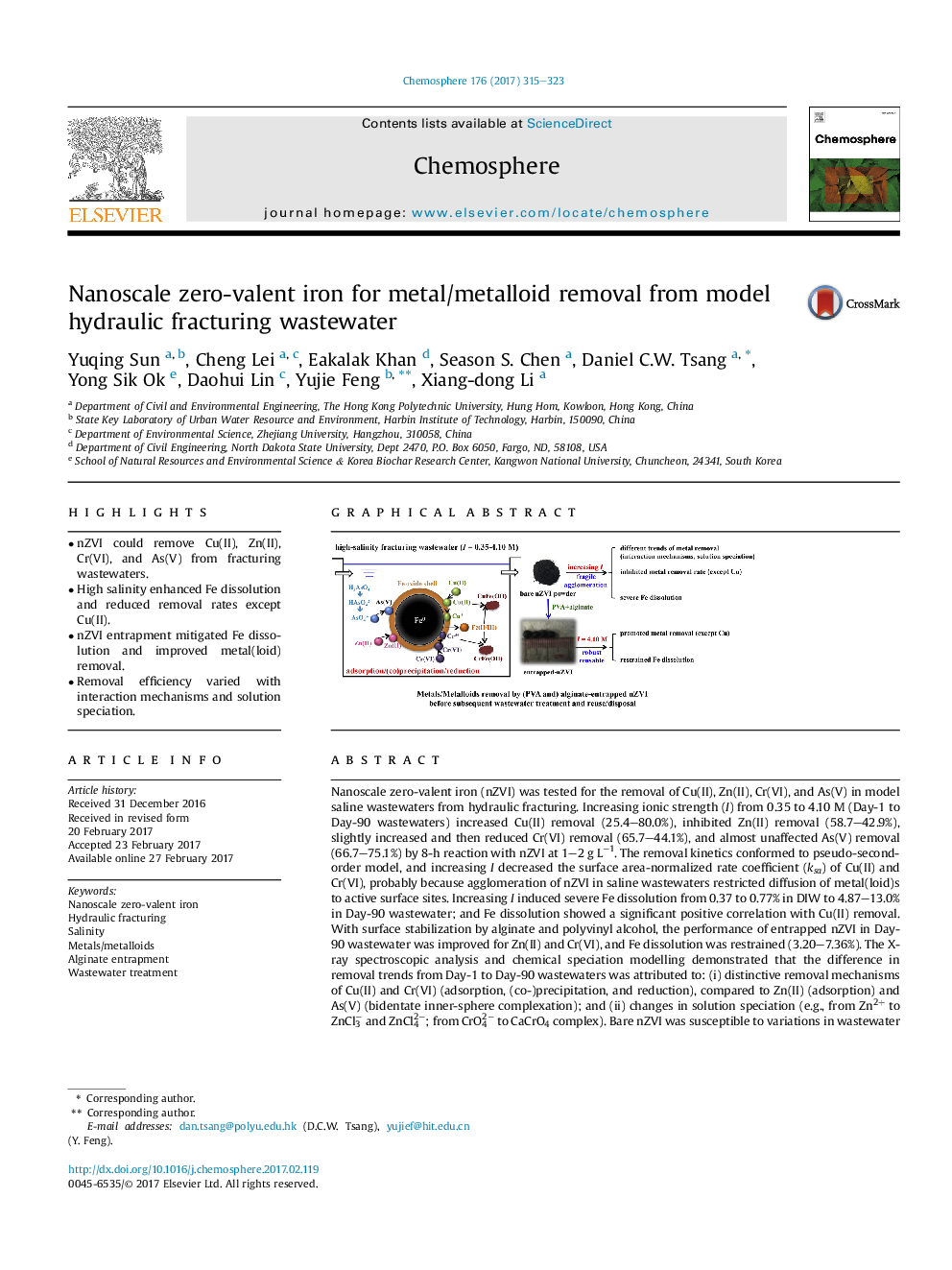| کد مقاله | کد نشریه | سال انتشار | مقاله انگلیسی | نسخه تمام متن |
|---|---|---|---|---|
| 5746869 | 1618795 | 2017 | 9 صفحه PDF | دانلود رایگان |
- nZVI could remove Cu(II), Zn(II), Cr(VI), and As(V) from fracturing wastewaters.
- High salinity enhanced Fe dissolution and reduced removal rates except Cu(II).
- nZVI entrapment mitigated Fe dissolution and improved metal(loid) removal.
- Removal efficiency varied with interaction mechanisms and solution speciation.
Nanoscale zero-valent iron (nZVI) was tested for the removal of Cu(II), Zn(II), Cr(VI), and As(V) in model saline wastewaters from hydraulic fracturing. Increasing ionic strength (I) from 0.35 to 4.10 M (Day-1 to Day-90 wastewaters) increased Cu(II) removal (25.4-80.0%), inhibited Zn(II) removal (58.7-42.9%), slightly increased and then reduced Cr(VI) removal (65.7-44.1%), and almost unaffected As(V) removal (66.7-75.1%) by 8-h reaction with nZVI at 1-2 g Lâ1. The removal kinetics conformed to pseudo-second-order model, and increasing I decreased the surface area-normalized rate coefficient (ksa) of Cu(II) and Cr(VI), probably because agglomeration of nZVI in saline wastewaters restricted diffusion of metal(loid)s to active surface sites. Increasing I induced severe Fe dissolution from 0.37 to 0.77% in DIW to 4.87-13.0% in Day-90 wastewater; and Fe dissolution showed a significant positive correlation with Cu(II) removal. With surface stabilization by alginate and polyvinyl alcohol, the performance of entrapped nZVI in Day-90 wastewater was improved for Zn(II) and Cr(VI), and Fe dissolution was restrained (3.20-7.36%). The X-ray spectroscopic analysis and chemical speciation modelling demonstrated that the difference in removal trends from Day-1 to Day-90 wastewaters was attributed to: (i) distinctive removal mechanisms of Cu(II) and Cr(VI) (adsorption, (co-)precipitation, and reduction), compared to Zn(II) (adsorption) and As(V) (bidentate inner-sphere complexation); and (ii) changes in solution speciation (e.g., from Zn2+ to ZnCl3â and ZnCl42â; from CrO42â to CaCrO4 complex). Bare nZVI was susceptible to variations in wastewater chemistry while entrapped nZVI was more stable and environmentally benign, which could be used to remove metals/metalloids before subsequent treatment for reuse/disposal.
329
Journal: Chemosphere - Volume 176, June 2017, Pages 315-323
